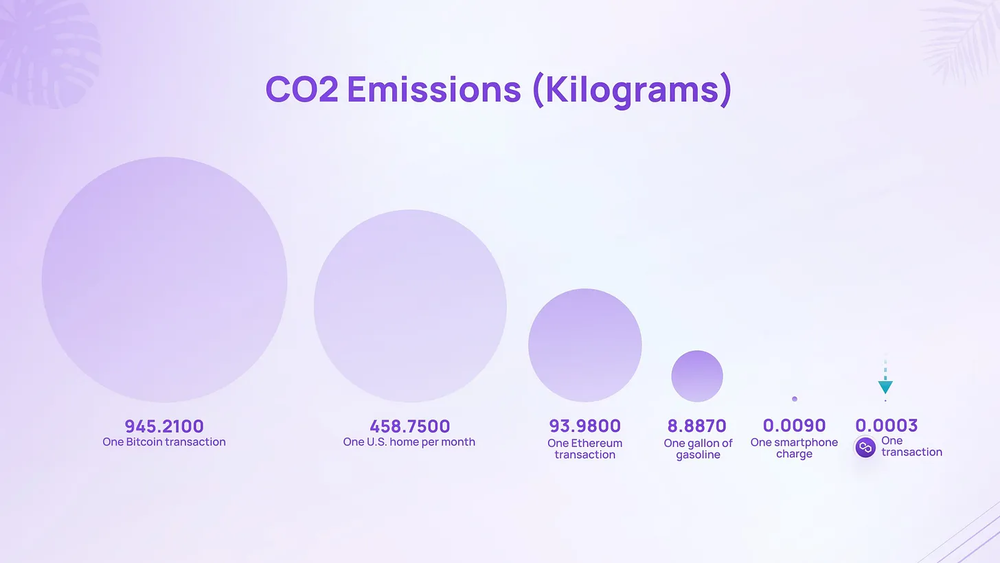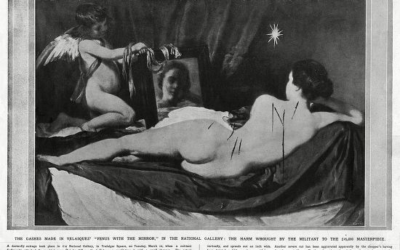Written by Harriet Maher
July 26, 2022

Why Culture Vault chose Polygon to build on

Polygon is going carbon neutral in 2022
If you’re even slightly familiar with the world of cryptocurrency, you’ve probably heard of Ethereum. As a layer 1 blockchain, it’s the largest smart contract network in the world, and the second-biggest cryptocurrency by market cap, after Bitcoin. What you might not know is that with the meteoric growth of traffic on the Ethereum blockchain in the last few years, the network has become slow and expensive to use with wildly varying transaction costs at different times of the day. At the time of writing, one transaction on Ethereum costs about $2.00; a few weeks ago, this was around $23 in fees for every transaction made on Ethereum.
The gas is too damn high for mainstream adoption.
Aside from the often high costs, Ethereum also suffers occasionally from slow processing times during periods of high congestion on the blockchain; the average speed is fifteen transactions per second. And by now, it’s well known and widely discussed that proof of work blockchains like Ethereum and Bitcoin use copious amounts of energy to run, and that this has a serious impact on the environment. According to Digiconomist, Ethereum uses 113 terawatt-hours per year—as much power as the Netherlands. This makes many people hesitant to use Ethereum, as the discourse around greening the blockchain grows ever louder. We are big and early supporters of the Ethereum ecosystem, but we don’t believe that the current NFT ecosystem will be able to scale under the current user experience of eth, eth2.0 can’t come soon enough.
This is why Culture Vault uses Polygon, a layer 2 network or ‘side chain’ to Ethereum that allows for greater scaling than its larger counterpart, and uses less energy to do so. Polygon was originally founded under the name Matic Network in 2017 by crypto-billionaires Jaynti Kanani, Sandeep Nailwal, and Anurag Arjun. The trio hail from India, but the team now comprises a global community of engineers, developers, and some high-flying investors. The network was originally designed to solve Ethereum’s scalability problems and address other concerns about power consumption and cost. It achieves this by handling transactions on a separate, Ethereum-compatible blockchain. Polygon operates on its own Proof-of-Stake (PoS) mechanism and processes transactions in batches, making it faster and cheaper than Ethereum’s current iteration. Polygon has the capacity to handle up to 65,000 transactions per second, compared to Ethereum’s average limit of around fifteen. As well as being incomparably faster and cheaper to use, Polygon calls itself ‘an internet of blockchains’, meaning it can connect any Ethereum-interoperable blockchain with another. This allows developers to access the benefits of other blockchain platforms with minimal friction and fractional cost.

Source: https://twitter.com/0xpolygon/status/1467873002167537665
For users of Culture Vault, this means that NFTs are more affordable to purchase and that buying NFTs on our platform is faster, greener, and significantly lower in gas fees than marketplaces that run on Ethereum (around 0.001 cent at the time of writing). Culture Vault made the conscious decision to build a more accessible, reliable and less congested platform using Polygon, and to pass these benefits on to our community of artists and creatives, while at the same time reducing our impact on the environment.
And we’re not the only ones! Nearly 20,000 decentralized apps use the Polygon network as of May 2022, including the likes of Decentraland, OpenSea, and Ticketmaster. Possibly the best-known individual associated with Polygon is the billionaire Mark Cuban, who is an investor of Shark Tank fame and a mentor to Polygon’s community. Their vibrant ecosystem is also one of the reasons that large corporate enterprises like EY, Adobe, Stripe, Telefonica, and Dolce & Gabbana are choosing Polygon as their entry point to Web3. Not to mention that Meta recently announced it will be partnering with Polygon to integrate NFTs on Facebook and Instagram, so users can authentically show off their BAYC’s and Cryptopunks for all their followers to admire, without paying anything in fees.
Rounding out the list of reasons why Culture Vault chooses to mint on Polygon, the network recently pledged $20 million to go carbon neutral this year, and they’re shaping up to be a leader in greening the crypto industry. Going carbon neutral means that every NFT minted, every token bridged and all decentralized finance (DeFi) trades made on Polygon will be accounted for, and their environmental impact will be offset. Not only is Polygon accounting for its own carbon footprint and vowing to offset it; part of its “Green Manifesto: A Smart Contract with Planet Earth” includes a plan to provide resources for others in the space who also want to offset their emissions. We know how important it is for our community of artists, collectors, and brand partners to know that their actions are making a positive difference to the climate crisis, and by using Polygon, Culture Vault is making sure that they do.
This piece was originally written for Culture Vault and published on https://culturevault.substack.com/ on 09 June 2022
Related Articles
Weekend Viewing: 13-15 January
It's a new year and there is a brand new lineup of shows opening around the world . Here are some of my top picks for exhibitions to check out this weekend, both online and in person. From biennials to blockbusters and everything in between, this short list will...
My Robot Could’ve Made That
There is a well-known book on modern art called “Why Your Five Year Old Could Not Have Done That.” It speaks to the once-common dismissals of abstract and ‘primitive’ styles of art as childish; art that we now prize above any other genre. But perhaps the next...
Just Stop.
Why using art as a vehicle for protest isn't the solution There’s been a lot of art in the news lately, but not necessarily for the right reasons. We’re used to seeing Picasso, Van Gogh and Munch’s names splashed across the pages of newspapers and the internet, but...



